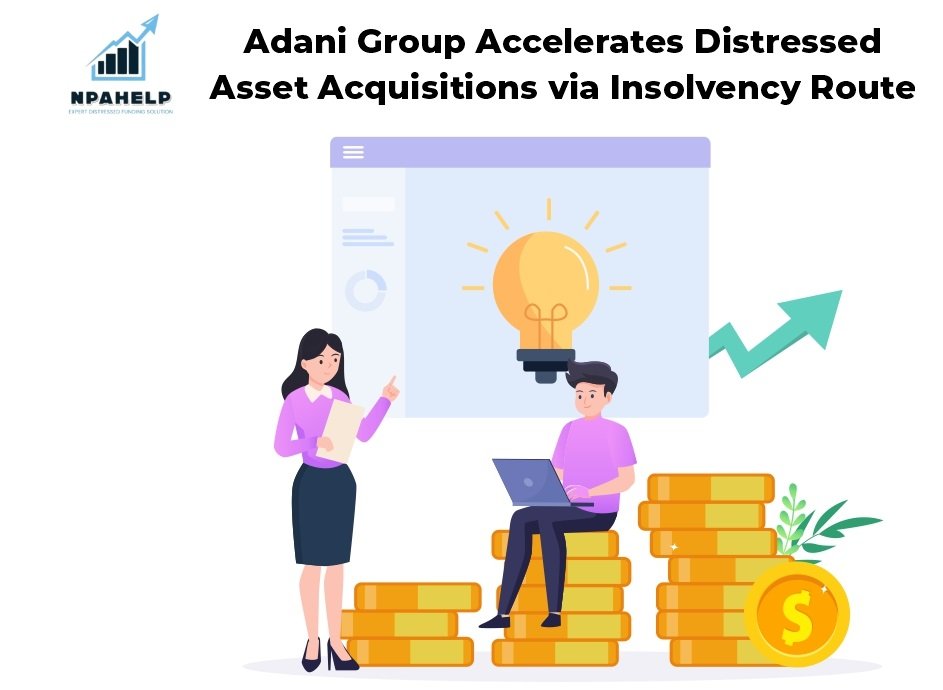
Adani Group Boosts Distressed Asset Buys via IBC
Adani Group has emerged as the dominant force in India’s NPA market, using the Insolvency and Bankruptcy Code (IBC) to buy up a wide variety of companies in power, infrastructure, ports and real estate. The boisterous acquisition drive has helped the conglomerate get hold of prized assets at a fraction of the cost, with many of the critical infrastructure and industrial capacities being revived and turned around, along with increasing presence in key sectors.
Power Sector: Consolidating Market Leadership
One of the primary areas of Adani’s acquisition spree has been the power sector. Adani Power Ltd (APL) is now the largest private sector thermal power generator in India after a spate of high-impact acquisitions:
- Vidarbha Industries Power Ltd. (VIPL): Bought for ₹4,000 crore, this 2×300 MW coal-based plant based in Nagpur was incorporated into Adani Power in July 2025, which increased its operational capacity to 18,150 MW.
- Essar Power MP Ltd. (now Mahan Energen): Purchased for ₹2,500 crore against admitted claims of ₹12,000 crore, with the acquisition finalized in March 2022.
- Korba West Power Company Ltd. (now Raigarh Energy Generation): Bought at ₹1,100 crore, with unsecured creditors being paid 100 per cent compensation against their claims of ₹1,685 crore.
- GMR Chhattisgarh Energy Ltd. (GCEL) / Raipur Energen: Adani Power acquired a controlling stake in this 1,370 MW plant, with a debt restructured with an enterprise value of ₹3,550 crore.
- Lanco Amarkantak Power: Bought recently for ₹4,101 crore against total claims of ₹15,190 crore.
- Coastal Energen: Bought through a consortium for ₹3,335 crore, but the resolution plan went into a temporary legal block.
Ports and Logistics: Extending the National Network
Adani Ports and Special Economic Zone Ltd. (APSEZ) has used the IBC to further expand its vast port network:
- Karaikal Port Private Ltd. (KPPL): Bought over for ₹1,583 crore; ₹1,485 crore paid to creditors on the spot. This transaction, which was concluded after the Hindenburg Research report, highlights Adani’s strength and strategy.
- Dighi Port: Acquired in February 2021, for ₹705 crore, expanding Adani’s presence on the west coast of India.
Real Estate: Strategic Urban Acquisitions
Adani’s real estate wing too has increasingly found itself playing the insolvency game, especially for eye-popping urban realty gripes:
- HDIL Assets: In June/July 2025, got NCLT nod to buy Project BKC for ₹3 crore and Shahad Maharal Lands for ₹64 crore, part of HDIL’s ₹7,800 crore insolvency.
- Aditya Estates (Bhagwan Das Road bungalow): Taken over for ₹400 crore from bankruptcy cases.
- Radius Estates and Developers: A distressed corporation that was also picked up by Adani Goodhomes and with the NCLAT and Supreme Court also upholding the same. Radius had a liability of ₹2,834.92 crore.
The IBC Advantage: Acquiring at Deep Discounts
Adani Group’s playbook is a result of the IBC’s market-discovery mechanism, where buyers can pick up companies on a clean slate (without legacy debts) at a rate of 80-90% discount. For instance, Radius Estates was bought for just ₹76 crore when it owed ₹1,700 crore of debt to HDFC Bank and lenders took a 96% haircut. And this is not all: this strategy allows Adani to bring precious assets, infrastructure and licences into its ecosystem at a fraction of their original price, generating synergies and growth.
The Jaiprakash Associates Bid: A Landmark Deal
The company was shortlisted as a potential acquirer in Jaiprakash Associates, a diversified business house with a debt of over ₹30,000 crore and is among the bidders shortlisted by the creditors led by IDBI Bank Ltd whom the founder of JAL, Jaiprakash Gaur, owes money. Adani has given its ₹12,600 crore unconditional offer, which will see an immediate cash payout, keeping working capital and settling contentious liabilities, also manifests its strategic interest in acquiring cement, power and real estate businesses of JAL. If this bid is successful, it would be one of the biggest corporate insolvency resolutions for India in 2025 and will help Adani strengthen its sphere of influence as a sector consolidator.
Financial Engineering and Post-Hindenburg Strategy
Adani’s recent purchases indicate a move toward balance sheet stability and self-funded growth, a lesson learned post Hindenburg crisis. The company has been raising equity from global investors, restructuring debt and also tapping internal accruals before entering into fresh deals. This disciplined determination has reinstated market confidence, Adani’s market cap has tracked back to ¾ (75%) of pre-crisis levels and Gautam Adani is back in the top billionaires of the world.
Conclusion: Shaping the Future of Indian Industry
The Adani Group’s chasing of distressed assets under the insolvency process is transforming India’s industrial landscape. By picking up and turning around stressed firms in power, ports and real estate, Adani is not just pushing sectoral consolidation but also part of the macro-drive to revive critical infrastructure. As the group targets larger deals like Jaiprakash Associates, its approach under the IBC could become a new reference point in terms of corporate restructuring and growth in India’s transitioning economy.